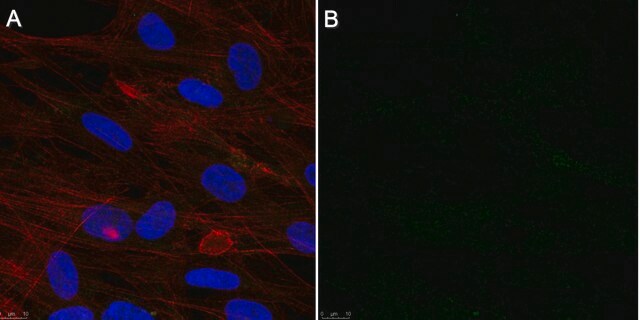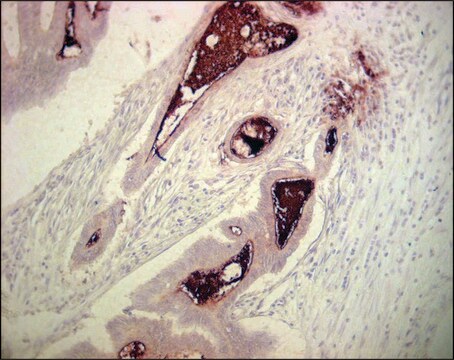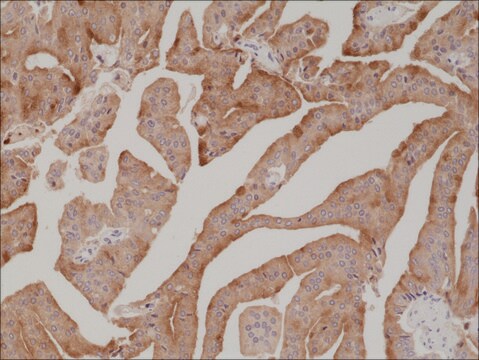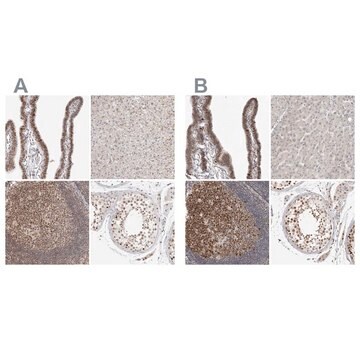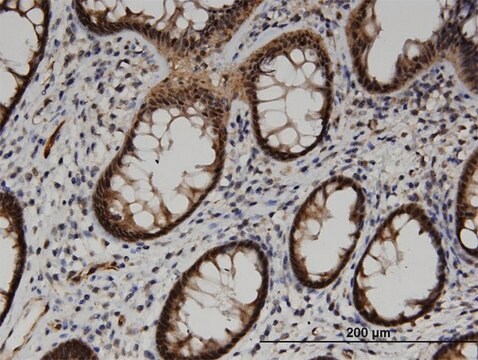Kluczowe dokumenty
SAB4200842
Anti-PMEL antibody, Mouse monoclonal
clone PL-19, purified from hybridoma cell culture
About This Item
immunofluorescence: 1-2 μg/mL using human melanoma SK-MEL-28 cells
Polecane produkty
forma przeciwciała
purified from hybridoma cell culture
Poziom jakości
rodzaj przeciwciała
primary antibodies
klon
PL-19
Formularz
liquid
reaktywność gatunkowa
human
stężenie
~1 mg/mL
metody
immunoblotting: 1-2 μg/mL using human melanoma SK-MEL-28 cell lysate
immunofluorescence: 1-2 μg/mL using human melanoma SK-MEL-28 cells
izotyp
IgG1
numer dostępu UniProt
Warunki transportu
dry ice
temp. przechowywania
−20°C
docelowa modyfikacja potranslacyjna
unmodified
informacje o genach
human ... PMEL(6490)
Opis ogólny
Specyficzność
Zastosowanie
Działania biochem./fizjol.
In addition, PMEL fibrils have an amyloidogenic nature sharing features with pathological amyloids.4 Thus, PMEL is suggested as an excellent model system to study mechanisms of intracellular amyloid formation.1
Mutations in PMEL are associated with pigmentation disorders and/or impairments in eye development in various species.1,5,6
Postać fizyczna
Przechowywanie i stabilność
Oświadczenie o zrzeczeniu się odpowiedzialności
Nie możesz znaleźć właściwego produktu?
Wypróbuj nasz Narzędzie selektora produktów.
Kod klasy składowania
10 - Combustible liquids
Klasa zagrożenia wodnego (WGK)
WGK 1
Temperatura zapłonu (°F)
Not applicable
Temperatura zapłonu (°C)
Not applicable
Wybierz jedną z najnowszych wersji:
Certyfikaty analizy (CoA)
Przepraszamy, ale COA dla tego produktu nie jest aktualnie dostępny online.
Proszę o kontakt, jeśli potrzebna jest pomoc Obsługa Klienta
Masz już ten produkt?
Dokumenty związane z niedawno zakupionymi produktami zostały zamieszczone w Bibliotece dokumentów.
Nasz zespół naukowców ma doświadczenie we wszystkich obszarach badań, w tym w naukach przyrodniczych, materiałoznawstwie, syntezie chemicznej, chromatografii, analityce i wielu innych dziedzinach.
Skontaktuj się z zespołem ds. pomocy technicznej
